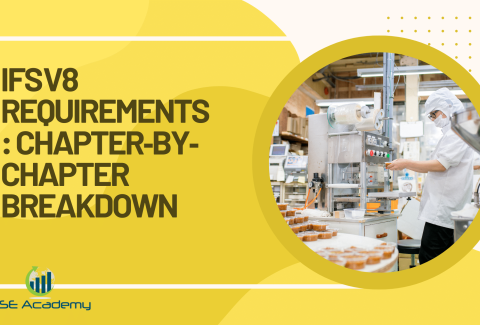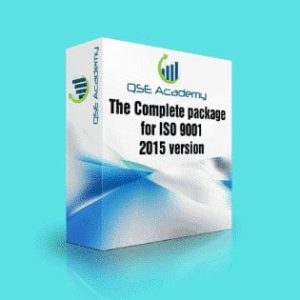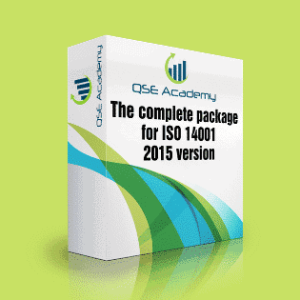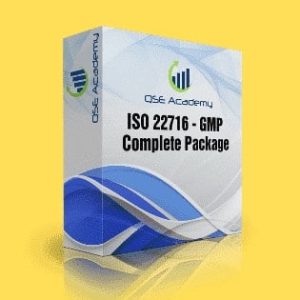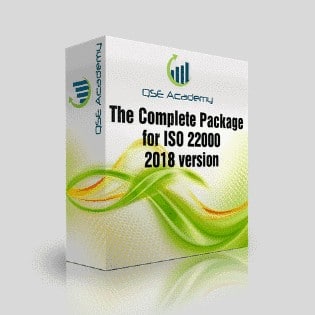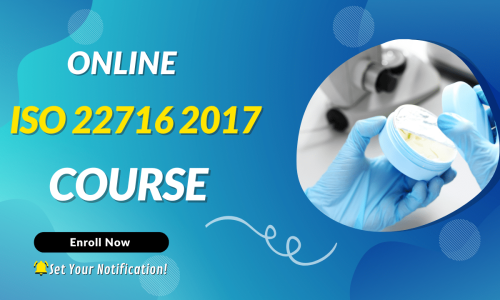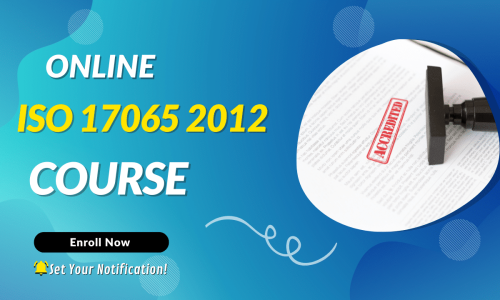How Long Does It Take to Get FSSC 22000 V6 Certified?
Last Updated on October 13, 2025 by Hafsa J.
How Long Does It Take to Get FSSC 22000 V6 Certified?
Let’s be honest—one of the first questions I get when someone’s exploring FSSC 22000 is, “How long is this going to take?”
And it’s a fair question. You’ve got production schedules to juggle, suppliers to manage, audits to prep for—not to mention a team that’s already stretched thin. So adding “get certified” to your to-do list? That’s no small thing.
In my experience helping food businesses—everything from small bakeries to global processors—the timeline for FSSC 22000 V6 certification typically falls between six to twelve months. But here’s the catch: it all depends on how ready you are, how your team’s organized, and how quickly you can respond when things get moving.
In this article, I’ll break down the entire certification timeline—stage by stage. We’ll cover the prep work, the audits, what usually causes delays, and what you can do to keep things moving smoothly. My goal? To give you a real-world, no-fluff roadmap so you can plan with confidence—and avoid last-minute surprises.
Let’s dive in.
Understanding the FSSC 22000 V6 Certification Timeline
Let’s start with the big picture.
On average, it takes anywhere from six to eighteen months to get certified to FSSC 22000 Version 6. I know—that’s a wide range. But the truth is, no two companies start from the same place.
Some already have a solid food safety management system in place and just need to tweak it. Others are starting from scratch, learning the framework, building documentation, and training staff as they go.
Here’s what really affects your timeline:
-
How mature your current systems are: If you’re already ISO 22000-certified or GFSI-aligned, you’re ahead of the game.
-
Your team’s bandwidth: Companies that dedicate a project manager or cross-functional task force move faster than those who try to squeeze it in between daily operations.
-
Company size and complexity: A single-site dry goods facility will move faster than a multi-site operation with high-risk products.
-
Audit scheduling: I can’t stress this enough—booking your certification body early can save you weeks, sometimes months.
So if you’re trying to plan this out, here’s what I usually tell clients:
Six months is possible—but only if you’re already in good shape, fully committed, and moving fast.
More commonly, teams need nine to twelve months for a well-paced, realistic process. And in some cases—especially for larger or more complex businesses—eighteen months isn’t unusual.
Now that we’ve covered the big picture, let’s walk through the certification journey phase by phase—starting with what happens before you even begin implementation: the planning and gap assessment stage. Ready? Let’s go.
Phase 1: Gap Assessment and Planning (2–6 Weeks)
Before you start updating documents or training your team, you’ve got to figure out where you stand. That’s where the gap assessment comes in—and it’s one of the most important (and often most overlooked) steps in the entire process.
What Happens in This Phase?
Think of this as your food safety system’s checkup. You’re comparing what you currently do with what FSSC 22000 V6 requires. The goal? Identify the missing pieces before you start building or fixing anything.
This phase usually includes:
-
Reviewing your existing procedures and records
-
Mapping out where you align (and don’t) with FSSC requirements
-
Outlining an implementation plan based on real gaps—not guesswork
-
Deciding whether to bring in outside help (consultant, trainer, etc.)
How Long Does It Take?
Most companies complete this in two to six weeks, depending on:
-
The availability of your internal team
-
Whether you use a consultant or do it in-house
-
How well-documented your current processes are
One client I worked with—a mid-sized frozen foods manufacturer—wrapped up their gap assessment in just under three weeks because they had an internal quality lead who’d already done ISO 22000. On the flip side, a small beverage startup took closer to six weeks because everything had to be built from scratch.
Why This Step Matters
Let me be real—skipping or rushing the gap analysis is a mistake I’ve seen too many times. Without it, you’re basically guessing what needs to be done, and that almost always leads to rework, delays, or non-conformities during the audit.
This phase sets the foundation for everything else. Done right, it makes the rest of your journey a whole lot smoother.
Phase 2: Implementation and Documentation (2–6 Months)
Now comes the heavy lifting. Once you’ve mapped out what’s missing, it’s time to actually build or upgrade your food safety management system (FSMS) to meet FSSC 22000 V6 requirements.
This is where a lot of teams realize just how much is involved—and why having a plan (and the right people) makes such a difference.
What Happens in This Phase?
You’ll be doing several things in parallel:
-
Writing or revising SOPs, policies, and records
-
Implementing prerequisite programs (based on ISO/TS 22002 series or equivalent)
-
Conducting risk assessments (HACCP, food defense, food fraud)
-
Training your staff on new procedures and responsibilities
-
Making operational changes if needed (like traceability improvements or supplier control processes)
This phase touches every part of your business—from production to purchasing to sanitation. That’s why cross-functional collaboration is key.
How Long Does It Take?
Most companies spend two to six months on this phase. What makes the difference?
-
Team bandwidth: If you can dedicate a project lead and give them real authority, you’ll move faster.
-
System maturity: If you’re upgrading from an existing ISO 22000 or GFSI-level system, you may only need two or three months. Starting from zero? It’ll take longer.
-
Decision-making speed: Delays often come from waiting on management approvals or finalizing cross-department policies.
One bakery I worked with had strong leadership buy-in and a small but focused QA team. They rolled out their full FSSC system in just under three months. On the other hand, a multi-site produce processor with fragmented systems took close to six months—and that was still a solid outcome.
What to Watch For
This is where many teams get stuck. Why? Because documentation piles up, day-to-day work gets in the way, and food safety takes a backseat to production. I always tell clients—block time for this work, or it simply won’t happen.
You don’t have to be perfect, but you do need to have systems in place, staff trained, and records running consistently. That’s what your auditor will be looking for.
Phase 3: Internal Audit and Management Review (2–4 Weeks)
This is where things get real. Once your system is up and running, you need to test it from the inside—and that’s exactly what this phase is about. Before you can even think about scheduling your certification audit, you must complete an internal audit and a full management review. No exceptions.
What Happens in This Phase?
Two key activities:
-
Internal Audit
You’ll audit your own food safety management system against the FSSC 22000 V6 standard. That includes checking documentation, procedures, records, employee understanding, and how well everything is working in practice. -
Management Review
Top management needs to formally review audit results, nonconformities, improvements, and other key inputs. The goal is to show leadership involvement and commitment to continuous improvement.
Both of these steps are required—and your auditor will ask to see documented evidence that they were completed.
How Long Does It Take?
Most companies spend two to four weeks on this phase. Here’s what influences that:
-
Do you have trained internal auditors? If not, you’ll need to train someone first (which adds time).
-
How large is your operation? The more processes and departments involved, the longer it takes to audit them all.
-
Are you prepared to fix what you find? If your internal audit turns up gaps, you’ll need time to address them before moving forward.
For example, I worked with a dairy plant that had a well-trained QA team—they completed their internal audit in one week and their management review the next. But another facility, new to formal systems, had to pause for three weeks to train auditors and schedule department walkthroughs.
Real Talk: This Step Gets Rushed—Don’t Do That
Too often, teams treat the internal audit like a checkbox—something they squeeze in at the last minute. That’s a mistake. A solid internal audit gives you a chance to fix issues before the certification body shows up. It’s your last dry run—and it’s worth doing right.
Phase 4: Certification Audit (3–8 Weeks Total for Stage 1 + Stage 2)
This is the moment you’ve been building toward—the formal certification audit. It’s split into two stages, and timing matters more than most people realize. Your ability to stay on schedule here depends on how early you engage your certification body and how quickly you can respond to findings.
What Happens in This Phase?
Stage 1: Documentation and Readiness Review
This is usually a desk audit (sometimes done remotely). The auditor checks that your documented system meets FSSC 22000 V6 requirements and that your internal audit and management review have been completed.
-
Typically takes 1 day
-
Must be followed by Stage 2 within 6 months, per FSSC rules
Stage 2: On-Site Audit
This is the deep dive. The auditor visits your facility, interviews staff, observes operations, and reviews records to make sure your food safety system is working as described.
-
Duration: 1.5 to 5+ days, depending on company size and complexity
-
Timeline: Usually scheduled 3 to 6 weeks after Stage 1, depending on availability
How Long Does This Entire Phase Take?
Three to eight weeks is typical, from the day you book Stage 1 to the completion of Stage 2.
Here’s where timing often slips:
-
Scheduling bottlenecks with your chosen certification body
-
Delays in correcting issues found in Stage 1
-
Missing documentation or unreadiness that pushes Stage 2 further out
I had a client—a mid-size poultry processor—who nailed their implementation but waited too long to book their audit. They ended up waiting seven weeks for a Stage 2 slot, which put pressure on their product launch timelines.
Pro Tip: Book Early
This is the one part of the process that’s not entirely in your control. Certification bodies have limited auditor availability, and peak seasons fill up fast. Start talking to your chosen certifier months in advance and lock in your audit dates as soon as you’re confident in your readiness.
Phase 5: Post-Audit Corrections and Certificate Issuance (2–6 Weeks)
So, your Stage 2 audit is done. Great job getting this far—it’s no small feat. But you’re not certified just yet. Before your shiny new FSSC 22000 V6 certificate is issued, there’s one more critical step: closing out any nonconformities and going through the certification body’s final review process.
What Happens in This Phase?
1. Responding to Nonconformities
If your auditor identified any issues—major or minor—you’ll need to submit corrective actions. That includes:
-
A clear explanation of the root cause
-
A description of what was done to fix it
-
Supporting evidence (updated procedures, records, photos, etc.)
2. Review and Approval by the Certification Body
Once your response is submitted, the certification body reviews everything. If all corrective actions are accepted, they proceed to issue your certificate. If not, they may ask for clarification—or even another visit, in the case of major findings.
How Long Does It Take?
Most companies complete this phase in two to six weeks.
Here’s what influences the timing:
-
How quickly you respond: I’ve seen teams turn around corrective actions in 48 hours. I’ve also seen it take three weeks because they weren’t prepared.
-
Severity of findings: Major nonconformities may require more evidence or even a follow-up visit, which adds time.
-
Certification body review process: Some are faster than others. It pays to work with a body that communicates clearly and sticks to timelines.
For example, a snack manufacturer I supported recently wrapped up their audit with three minors. They submitted corrective actions within a week, and their certificate was issued two weeks later. That’s fast—but they were organized and ready.
Final Tip
Don’t coast after the audit. Assign someone to own the corrective action process and keep things moving. The longer you wait, the more momentum (and documentation) you risk losing.
With this phase wrapped, your certificate is officially issued—and you’re now FSSC 22000 V6 certified. But the work doesn’t stop there. Surveillance audits are on the horizon, and system maintenance is an ongoing commitment.
Pro Tips to Stay on Track and Certify Faster
After guiding dozens of companies through FSSC 22000 certification, I’ve seen what works—and what causes teams to fall behind. These quick, practical tips can shave weeks (sometimes months) off your timeline and help you avoid the most common delays.
Pro Tip 1: Lock in Your Certification Body Early
This is a big one. Don’t wait until the last minute to start talking to certification bodies. Some are booked out for months, especially during busy seasons.
My advice: Start conversations during your implementation phase, not after it. Get quotes, check availability, and reserve your Stage 1 and Stage 2 dates as early as possible.
Pro Tip 2: Assign a Project Lead with Decision Power
Too many teams assign certification to someone who’s already juggling five other roles—or who has to wait days for approvals. That’s a recipe for delays.
Choose a project leader who:
-
Has time to focus
-
Can coordinate across departments
-
Has the authority to make quick decisions
That one move can keep the process moving when it would otherwise stall.
Don’t rely on memory or scattered emails to manage your progress. Create a visual, shareable timeline with key milestones: training deadlines, audit scheduling, documentation completion, internal audits, etc.
What works well: A simple Gantt chart or Kanban board (Trello, Asana, even Excel) to keep everyone aligned.
Pro Tip 4: Digitize Document Control Early
Trying to manage your FSMS with folders and spreadsheets? That might work for a while—but when audit prep kicks in, things get messy fast.
A digital document control system:
-
Speeds up audit prep
-
Helps track revisions and approvals
-
Reduces time spent chasing down records
Several of my clients have cut their audit prep time in half just by switching to a cloud-based QMS tool before implementation wrapped.
Pro Tip 5: Treat Your Internal Audit Like a Dress Rehearsal
Too many companies treat the internal audit as a checkbox item. Big mistake. This is your last chance to catch issues before the auditor walks through your doors.
Run it like the real thing. Interview staff. Review records. Write up findings honestly. The more thorough you are here, the fewer surprises later.
Common Mistakes and FAQs: What Slows You Down (and How to Avoid It)
Even well-intentioned teams run into roadblocks during FSSC 22000 certification. After years of helping businesses through the process, I’ve seen a few patterns repeat themselves. Here’s what trips people up—and how to stay ahead of it.
Top Mistakes to Avoid
Mistake 1: Underestimating Documentation Time
Writing or updating SOPs, risk assessments, and records takes more time than most teams expect—especially if you’re juggling it with day-to-day operations. Don’t wait until the last month to get started.
Mistake 2: Booking the Audit Too Late
Waiting until everything is “perfect” before you reach out to your certification body can backfire. Slots fill up fast, especially for high-demand industries. Contact them early and reserve your place.
Mistake 3: Skipping Internal Training
Your documents might be flawless—but if your team can’t explain what they do or why they do it, the audit won’t go well. Build in time for meaningful, role-specific training.
Mistake 4: Treating the Internal Audit as a Formality
If you breeze through your internal audit just to check a box, you’re missing a huge opportunity to catch problems before the certification body does. Take it seriously.
Mistake 5: No Contingency Time in the Timeline
Things happen—people get sick, suppliers delay documentation, audits get pushed. If your plan has zero buffer time, even a small hiccup can throw off your entire certification window.
Frequently Asked Questions
Q1: Can we complete FSSC 22000 certification in under six months?
Yes—but only if you already have a strong food safety system in place, dedicated staff, and no major gaps. Most first-time applicants need nine to twelve months to do it right.
Q2: What’s the most common cause of delay?
Audit scheduling. Even if you’re ready, you might be waiting weeks for an available slot. Implementation delays and slow corrective action responses come in a close second.
Q3: Does our company size affect the timeline?
Absolutely. Larger facilities or multi-site operations often require more time to implement changes, conduct training, and complete internal audits. But even small businesses can hit delays without strong project management.
Q4: Is recertification faster than initial certification?
Usually, yes. Once your system is running and your team is experienced, surveillance and recertification audits move much quicker—as long as you keep up with system maintenance.
How Long Does FSSC 22000 V6 Certification Really Take?
If you’ve made it this far, here’s the truth: FSSC 22000 V6 certification isn’t something you can rush—and it’s not something you want to.
Based on real projects I’ve guided, most companies need six to twelve months to get certified, depending on their size, system maturity, and how well they manage the process. Could it happen faster? Yes. But doing it right is what sets you up for long-term success—not just passing an audit.
Let’s recap the timeline:
-
2 to 6 weeks for gap analysis and planning
-
2 to 6 months for implementation and documentation
-
2 to 4 weeks for internal audit and management review
-
3 to 8 weeks for Stage 1 and Stage 2 audits
-
2 to 6 weeks for closing out findings and receiving your certificate
The key is knowing what to expect, building in buffer time, and assigning clear ownership of every phase. When businesses treat this like a strategic project—not just a compliance task—they move faster, with fewer surprises.
Next step? If you’re thinking about starting your certification journey, don’t wait.
Download our free FSSC 22000 Certification Timeline Planner or book a quick call with me to map out a tailored plan for your business.
You’ve got everything it takes—now it’s just about making the time.
Whether it’s ISO 9001, ISO 22000, or the cosmetics-focused ISO 22716, I’ve spent my career I’m not here to call myself an expert—I prefer “enthusiast” because I truly love what I do. When I’m not writing about standards, you’ll probably find me playing Piano 🎹, connecting with people, or diving into my next big project💫. I’m an engineer specialized in the food and agricultural industry
make ISO standards less intimidating and more approachable for everyone.
turning complex jargon into clear, actionable steps that businesses can actually use.
There’s something incredibly rewarding about helping people navigate food safety and quality management systems
in a way that feels simple, practical, and even enjoyable.
I have a Master’s in QHSE management and over 12 years of experience as a Quality Manager
I’ve helped more than 15 companies implement ISO 9001, ISO 22000, ISO 22716, GMP, and other standards
My clients include food producers, cosmetics manufacturers, laboratories, and service companies
I believe quality systems should be simple, useful, and efficient.




